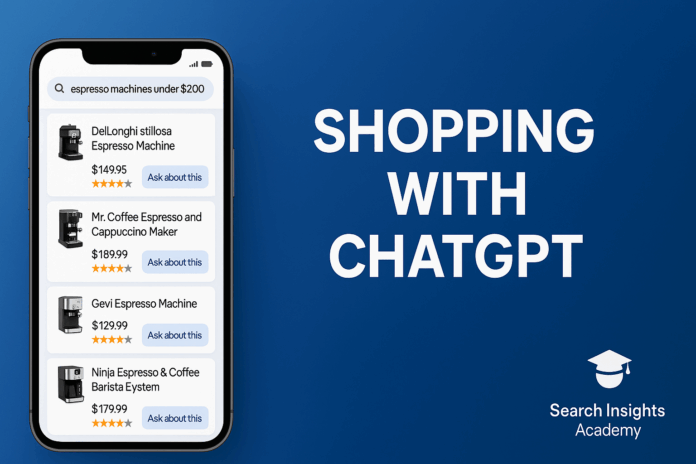In a significant evolution of AI assistant capabilities, OpenAI has launched a shopping feature within ChatGPT that promises to reshape how consumers discover and research products online. This ad-free shopping experience represents both an opportunity and potential challenge for businesses relying on traditional search engine visibility. Let’s explore what this means for your digital marketing strategy and how to adapt to this emerging search landscape.
What’s New: ChatGPT’s Ad-Free Shopping Experience
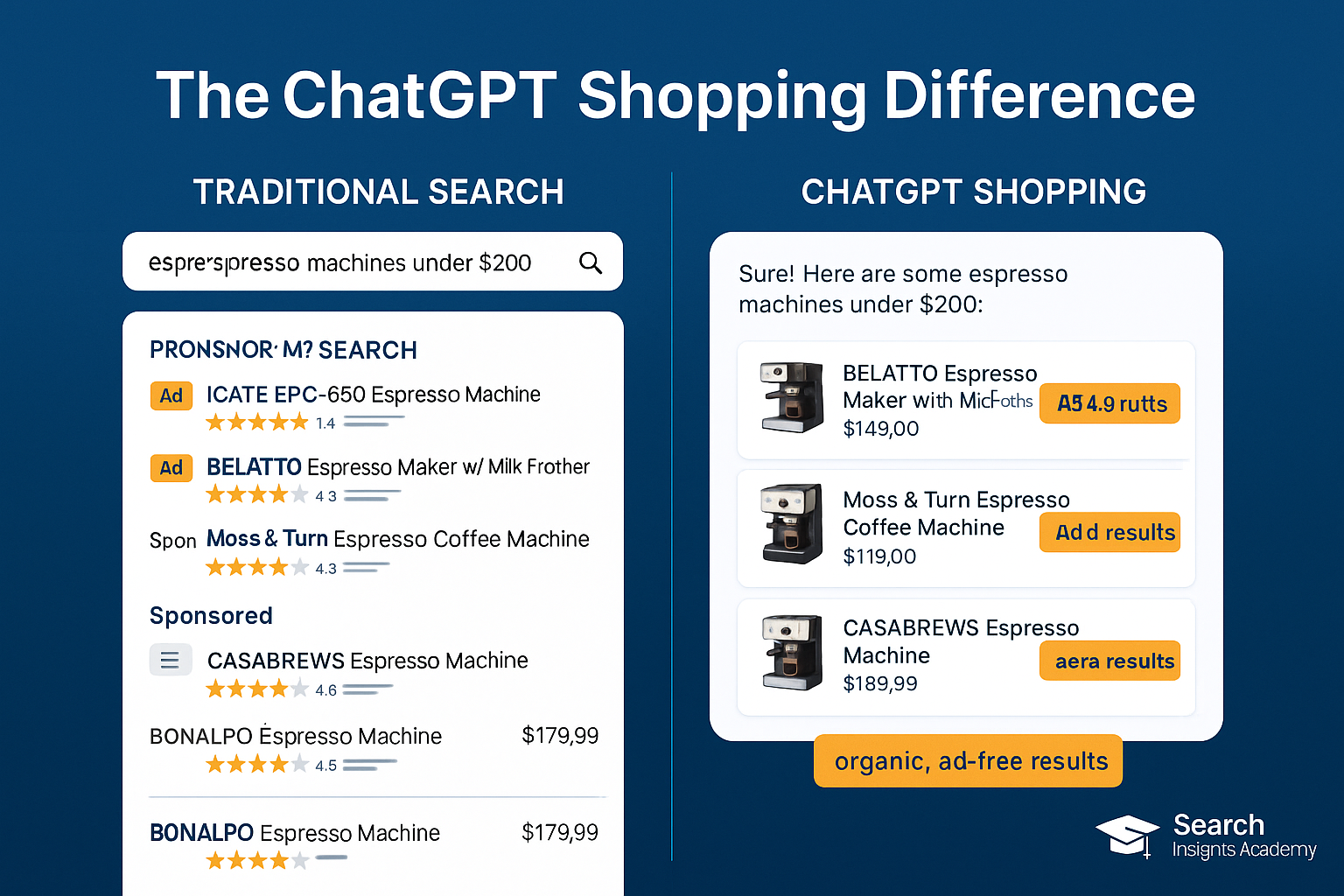
OpenAI has integrated a comprehensive shopping feature into ChatGPT that fundamentally differs from traditional search engines in several key ways:
- Truly organic results: Unlike Google Shopping or Amazon, ChatGPT shopping results contain no advertisements or sponsored placements. OpenAI explicitly states they “earn no commissions on purchases,” creating what they call a “purely informational” shopping experience (WIRED).
- Intent-driven discovery: The system responds to natural language queries like “best espresso machines under $200” with relevant product cards, complete with interactive “Ask about this” buttons for deeper exploration (The Verge).
- Massive user base: ChatGPT recently hit 400 million weekly active users as of February 2025, with over one billion searches processed weekly, creating a substantial new discovery channel for products (TechCrunch).
- Growing consumer adoption: Nearly 40% of shoppers already use generative AI for product research, with adoption rates doubling approximately every two months according to a recent Adobe report (Search Engine Land).
Technical Implementation: How It Works
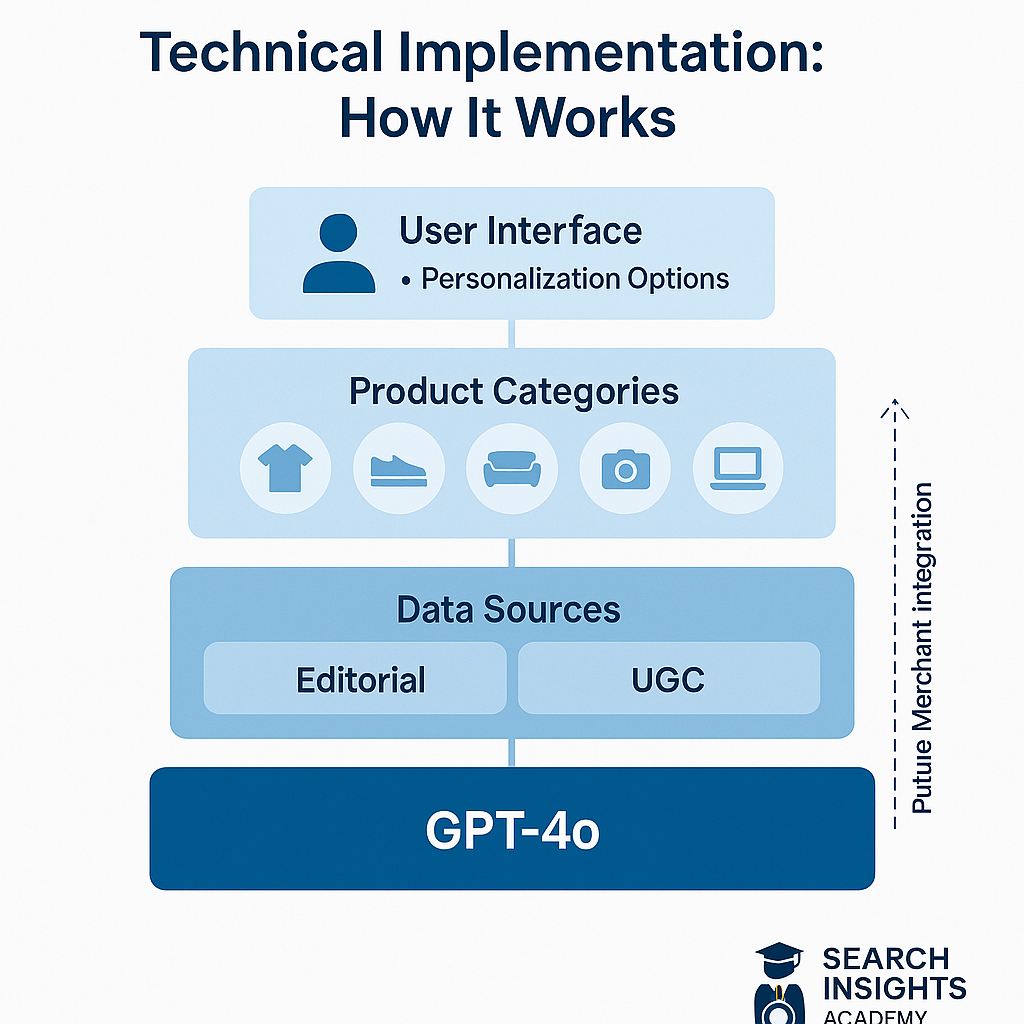
The shopping feature leverages several advanced technologies and approaches:
- GPT-4o foundation: The latest model powers the shopping experience, enabling fresh pricing data and review synthesis (WIRED).
- Broad product coverage: At launch, supported categories include fashion, beauty, electronics, home goods, and pet supplies (The Verge).
- Personalized recommendations: ChatGPT can remember style or color preferences for future shopping sessions (opt-in required outside the EEA) (WIRED).
- Diverse data sources: Review information blends content from editorial sources like WIRED with user-generated content from platforms like Reddit (WIRED).
- Merchant integration coming: A feed program for retailers is in development, with businesses able to register interest via the official OpenAI overview page.
Hypothesis & Method: Improving Product Visibility
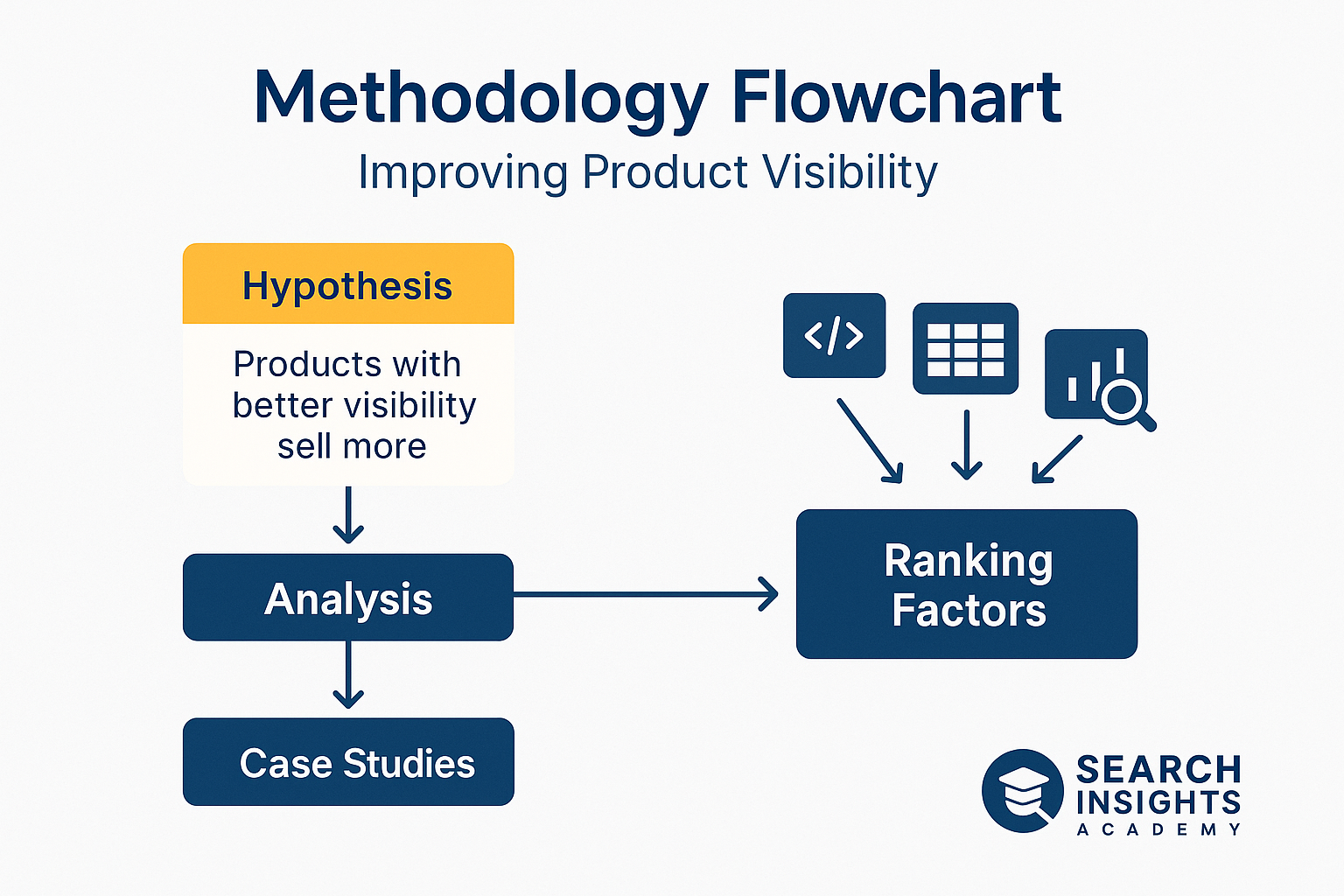
To understand how businesses might optimize for this new shopping channel, we need to examine how ChatGPT’s approach differs from traditional search engines.
Hypothesis
Products with comprehensive, structured data and strong trust signals will gain preferential visibility in ChatGPT’s shopping results, possibly outperforming SEO-optimized competitors that lack these elements.
Research Method
- Analysis of ChatGPT shopping feature documentation and expert observations
- Review of early adopter case studies
- Examination of ranking factors mentioned in technical interviews
Tools for Monitoring & Optimization
Several tools can help businesses adapt to this new shopping landscape:
- Schema validation tools: Testing structured product data for completeness
- Feed management platforms: Ensuring price and inventory freshness
- N8n webhooks: Monitoring ChatGPT product mentions (tutorial available)
- UTM parameter tracking: Measuring traffic from ChatGPT in analytics
- Post-purchase surveys: Identifying ChatGPT’s role in purchase decisions
Key Findings: What Makes Products Visible in ChatGPT
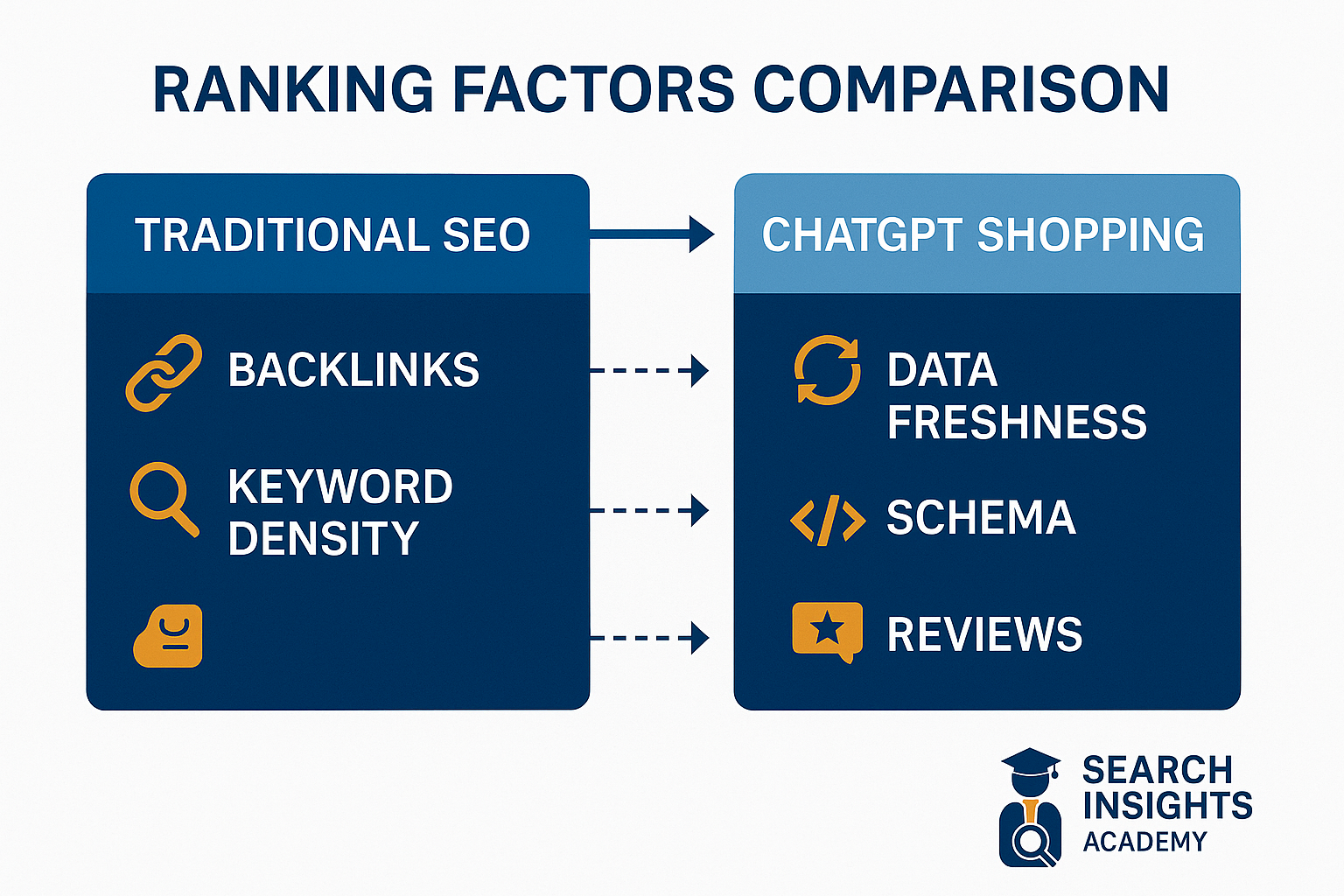
ChatGPT’s product ranking appears to prioritize:
- Data freshness and accuracy: Stale pricing or inventory data leads to rapid removal from results (WIRED)
- Comprehensive schema markup: Detailed product specifications including dimensions, materials, and feature lists boost relevance
- Verified reviews: Both quantity and quality matter, with preference for trusted sources
- Trust signals: Clear policies on returns, sustainability practices, and shipping transparency
- Conversational content alignment: Products with FAQ-style content that mirrors natural language queries appear to gain visibility
These ranking signals stand in contrast to traditional SEO, where keyword density and backlink profiles often dominate. Instead, ChatGPT shopping appears closer to entity-based search with strong emphasis on structured data.
Impact on Traditional SEO & E-commerce Strategy
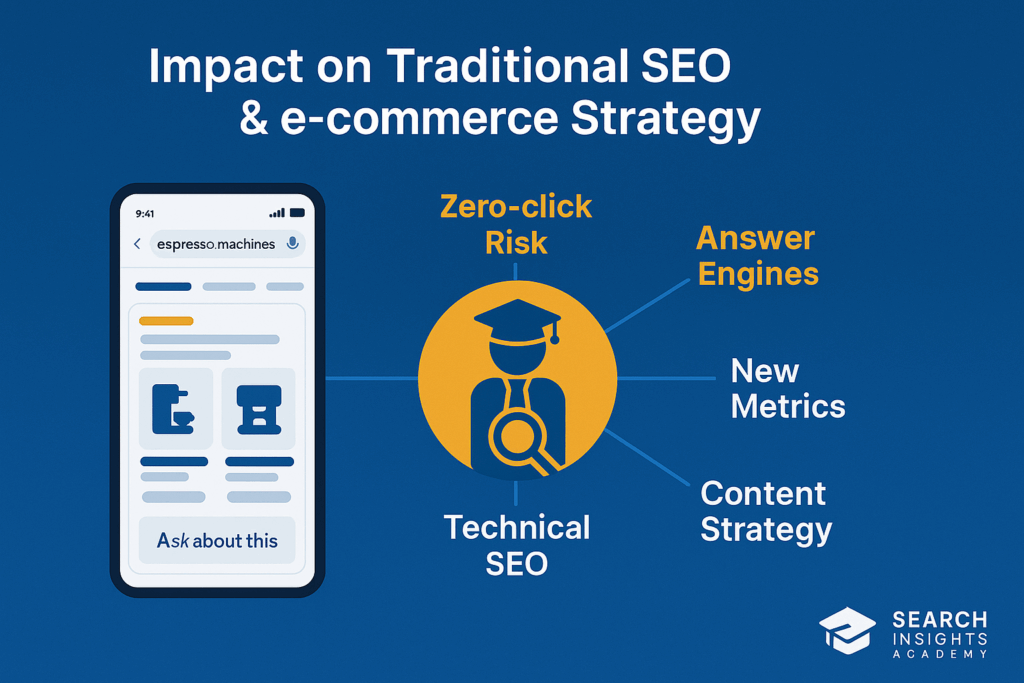
The emergence of ChatGPT as a shopping platform creates several strategic implications:
- Zero-click risk grows: As shoppers complete more research within ChatGPT, traditional website visits may decline for comparison shopping
- Answer engines gain importance: The shift from “Googling” to asking AI assistants is particularly pronounced among Gen Z consumers (Search Engine Land)
- Technical SEO evolution: Structured data and schema markup become even more critical for visibility in AI shopping
- Content strategy adaptation: Moving beyond keyword optimization to FAQ-based content addressing common shopping questions
- New performance metrics: Traditional SEO metrics need supplementing with “answer share” measurements
Recommended Steps: 5 Actions to Win in ChatGPT Shopping
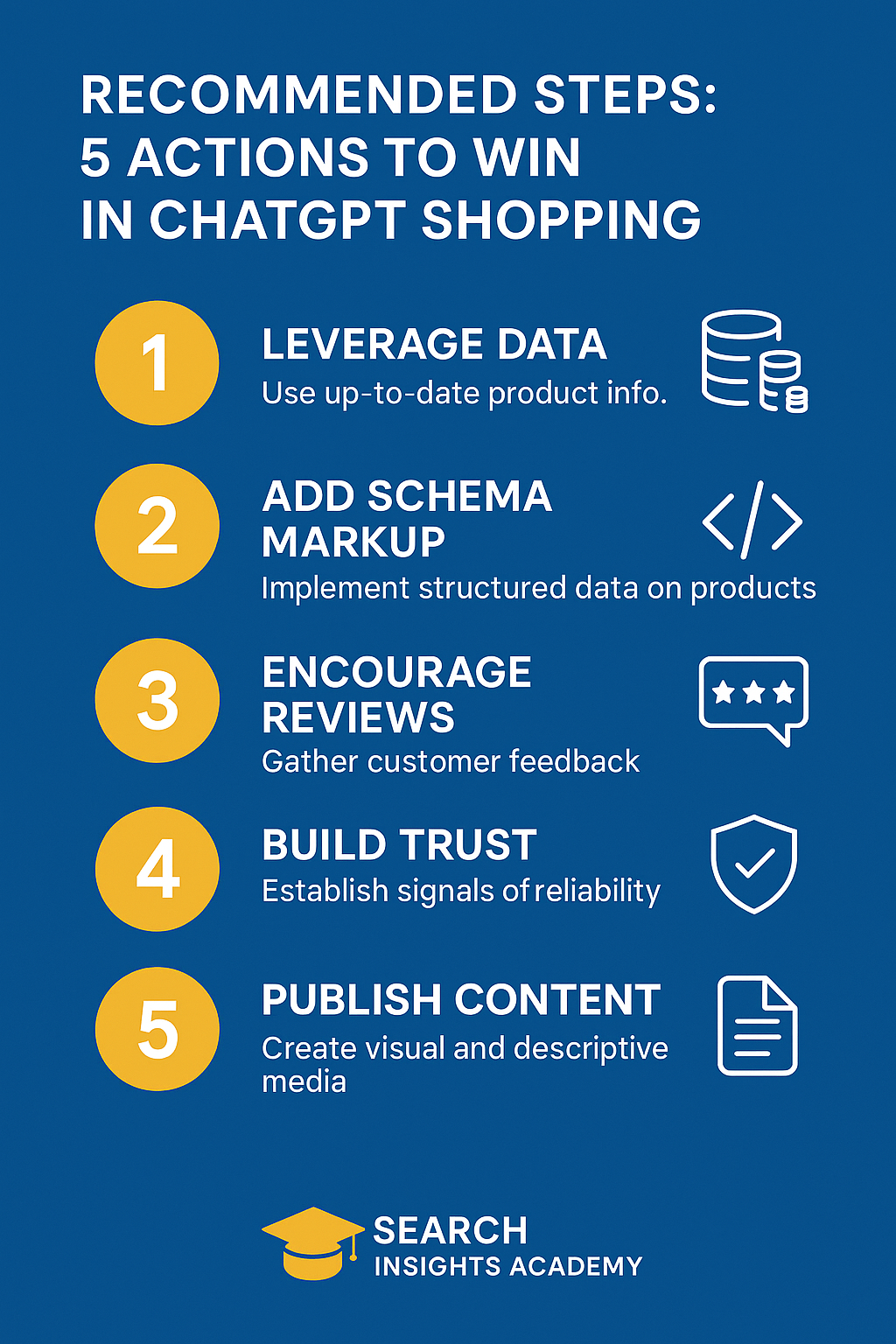
Based on our analysis, here are five concrete steps businesses should take to maximize visibility in ChatGPT’s shopping feature:
1. Audit and Enhance Product Schema
Ensure comprehensive implementation of product schema markup with complete details on:
- Pricing tiers
- Inventory status
- High-quality images
- Detailed specifications
- Material composition
- Manufacturing information
2. Implement Automated Data Feeds
Build systems to keep product information fresh across all channels:
- Set up daily price and inventory updates
- Integrate review aggregation
- Monitor for data discrepancies between your site and third-party listings
- Create alerting for stale data that could trigger removal from ChatGPT results
3. Develop Conversational Content
Create content that aligns with natural language shopping queries:
- Add FAQ sections addressing common product questions
- Structure product descriptions in question-answer format
- Include comparison information against competing products
- Address specific use cases and scenarios
4. Highlight Trust and Value Signals
Make your trust elements prominent and machine-readable:
- Clearly articulate return and refund policies
- Highlight sustainability practices
- Showcase shipping transparency
- Feature warranty information
- Include customer service accessibility details
5. Establish ChatGPT Monitoring
Implement systems to track your products‘ presence in ChatGPT:
- Set up webhooks to monitor product mentions (using tools like n8n)
- Create ChatGPT-specific promotion codes to track influence
- Add post-purchase surveys asking about AI assistant use
- Measure traffic with dedicated UTM parameters for any outbound ChatGPT links
Early Success Cases
Some brands are already seeing benefits from optimizing for AI shopping:
- Shopify merchants: Several are using sandbox stores to test different feed approaches and measure ChatGPT-driven lift (TechCrunch)
- Direct-to-consumer brands: Those leveraging user-generated content and photos are showing stronger performance for durability-focused queries (WIRED)
- Transparent pricing leaders: Brands with clear pricing structures and no hidden fees appear to receive preferential positioning
Performance Metrics to Track
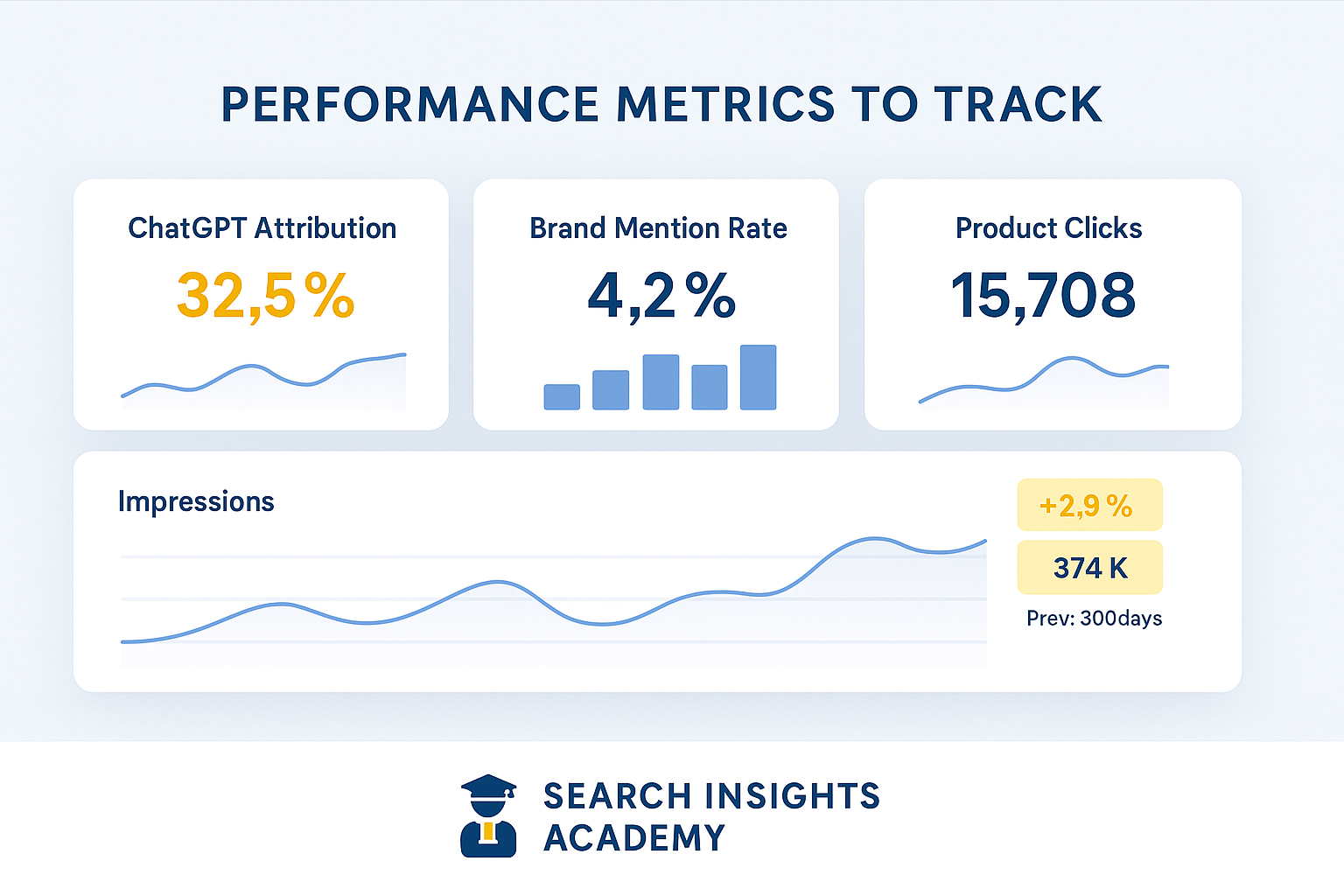
To measure success in this new channel, consider tracking:
- ChatGPT attribution: Traffic share from ChatGPT (via UTM parameters or post-purchase surveys)
- Assisted conversions: Instances where ChatGPT serves as first touch but not direct converter
- Brand mention rate: Frequency of your products appearing for relevant category queries
- Exclusive code redemption: Uptake of ChatGPT-specific promotion codes
- Content alignment: Correlation between conversational content topics and ChatGPT visibility
Conclusion: Preparing for an AI-Shopping Future
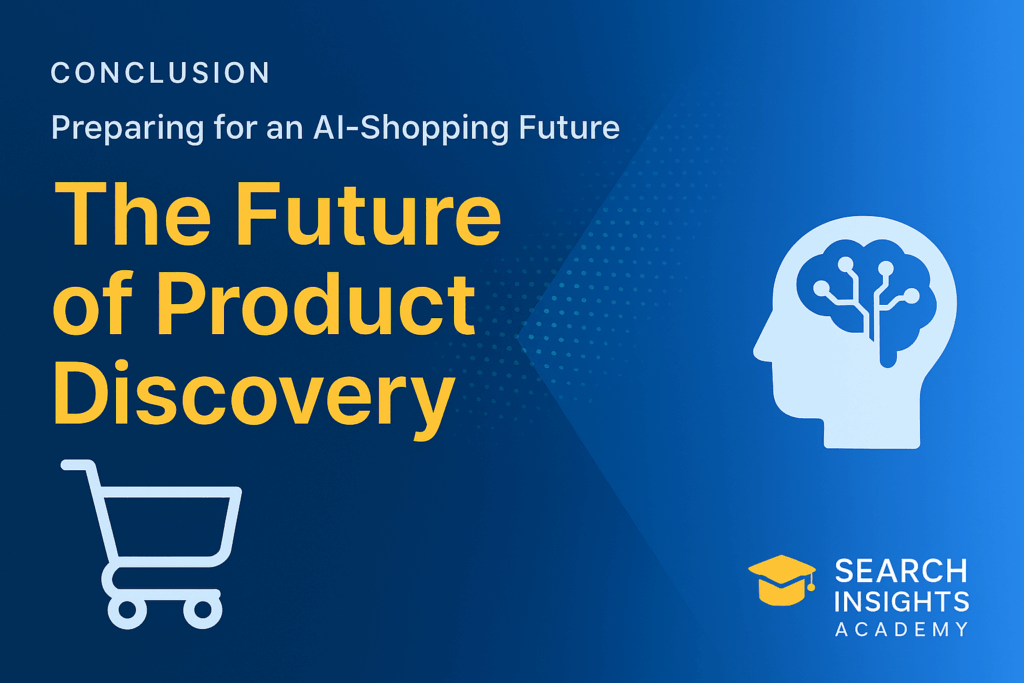
ChatGPT’s ad-free shopping layer represents a significant shift in product discovery that blends elements of technical SEO, content optimization, and user experience.
The absence of paid placements creates both opportunity and challenge: brands can’t simply buy visibility, but must earn it through comprehensive data, trust signals, and relevant content. This aligns with Google’s broader shift toward AI-powered search but creates a distinct playing field with its own rules.
For marketers already familiar with structured data and technical SEO fundamentals, adaptation to ChatGPT shopping represents an evolution rather than revolution of existing best practices. The key difference lies in execution quality and data comprehensiveness rather than introducing entirely new techniques.
As this shopping channel matures, expect continued refinement of ranking signals and expanded merchant integration options. Businesses that establish strong foundations now will be well-positioned as consumer adoption continues its rapid growth trajectory.
Further Reading
For deeper understanding of ChatGPT shopping and its implications:
- The Verge’s launch coverage
- WIRED’s in-depth technical overview
- Search Engine Land’s consumer adoption statistics
- Our guide to structured data and schema markup
- Understanding GEO vs. SEO in AI-driven search
The line between search optimization and AI assistant optimization continues to blur. The future belongs to businesses that master both traditional discovery channels and emerging conversational interfaces.

